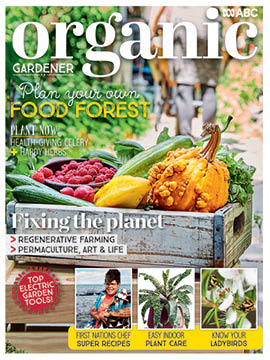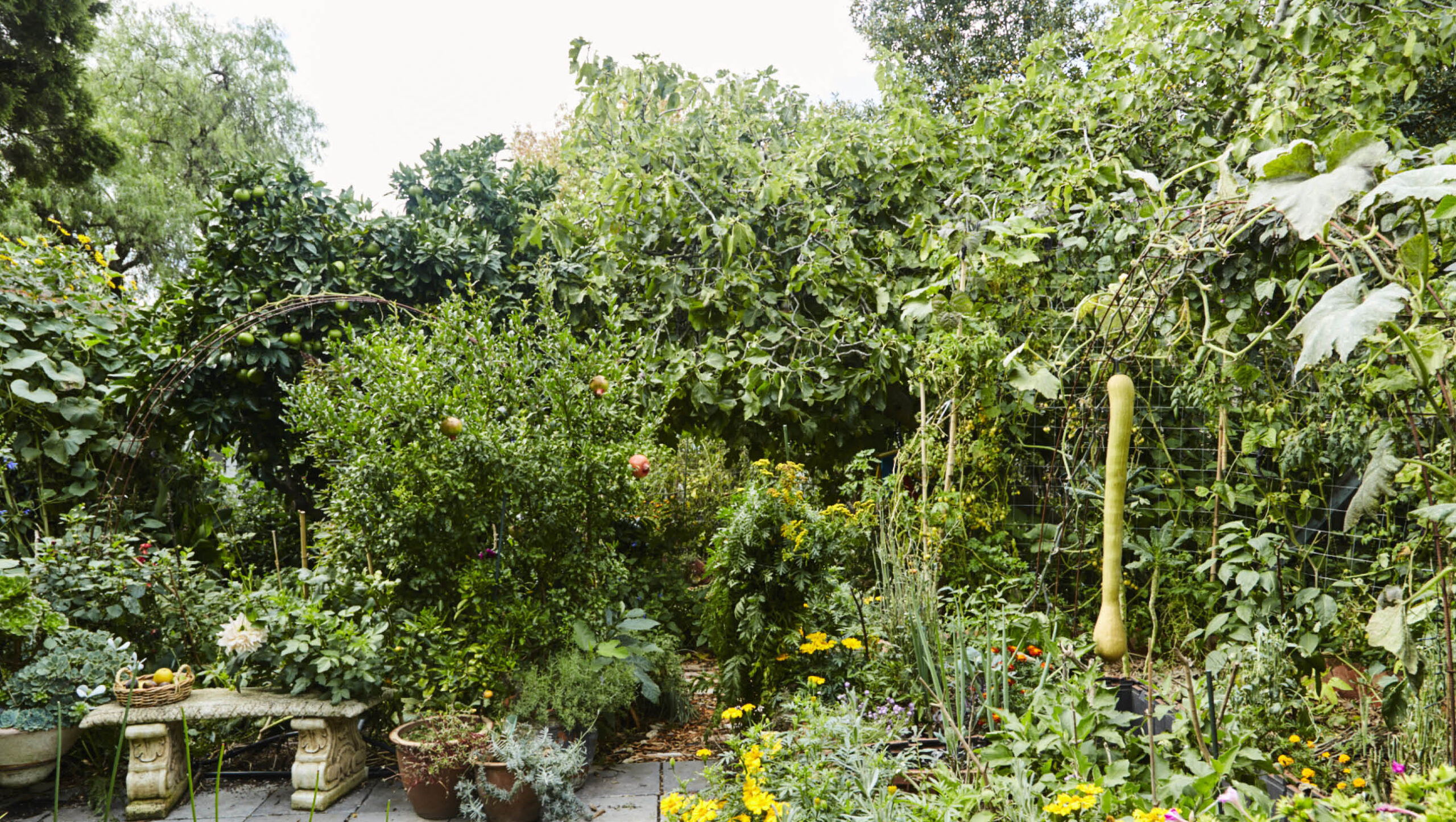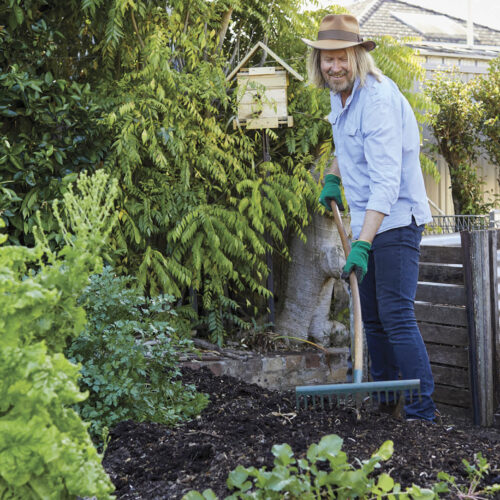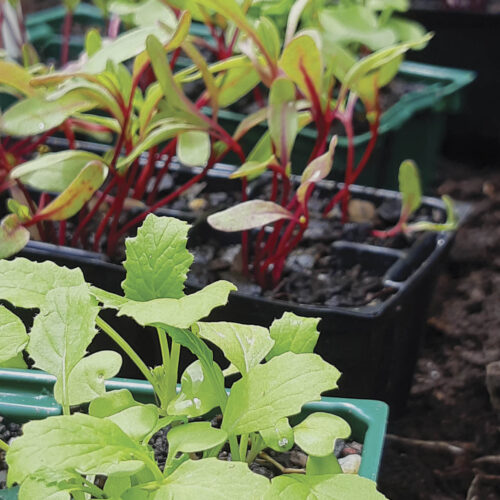What is a food forest?
2022-01-31T03:46:45+11:00
A permaculture concept, a food forest promises a self-sustaining system that produces an abundance of food if designed well. Here's why Jian Liu created one in her Melbourne backyard.
At its simplest, a food forest is an efficient way to organise edible plants so as to mimic a natural forest. In nature, a forest grows forever, takes care of itself, and doesn’t require anyone to look after it – no weeding, fertilising, pruning, mulching or pest control required. It’s not surprising then that we’d want to emulate this in our gardens.
Although inspired by nature, a food forest focuses on growing edible and companion plants – things that give us a yield. It is a human-created system where diverse plants are strategically positioned to maximise the use of light at different canopy heights. For example, rather than planting a single vegie or fruit tree in one spot, in a food forest you could have several different plants sharing the above-ground vertical space and the below-ground soil space.
I’ve found that food forests really shine in the following ways.
1. Makes the most of space
In our ever-smaller backyards, we’ve had to learn to do more with less and food forests are a great way to plant stack, maximising every inch of space. When you look at a flourishing food forest, you will see a sea of green with no exposed soil and many layers of plants. A top layer canopy tree may have a vining plant clambering up it, and be followed by another two or three layers of under-storey trees, with shrubs below them. On the ground, spreading plants act as a living mulch. There is no wasted space. Contrast this to a typical vegie patch with just one plant in each spot, with lots of gaps in between.
2. Embraces shade and creates microclimates
By planting densely, a food forest teaches us to embrace shade. Too often, full-sun is touted as the holy grail but in reality most plants appreciate some degree of shade particularly in our harsh Australian summers. Rather than putting up shade cloth, why not use the natural canopy of another tree or a vine to create living shade, while also obtaining a yield? Dense planting minimises weeds and covers soil to prevent moisture loss. The tree canopy also creates a microclimate, enabling us to push the boundaries of the local climate. Our avocado tree (canopy), babaco and raspberries (under-storey) really thrive together.
3. Celebrates diversity
The goal of a food forest is to create an ecosystem – to assemble plants that perform many different functions together to work in harmony: there are plants that attract beneficial insects, ones that act as fertiliser (a nitrogen-fixing layer) or a living mulch.
The greater the diversity of plants in your food forest, the more complex the ecosystem above the ground and the greater the connections between plants and organisms within your soil. It also means a more diverse harvest from a small space, such as a mix of nuts, fruits, flowers, vegies and even fertiliser and mulch.
4. A backbone of perennials
The foundation of every food forest is a range of perennials – plants that grow for a number of years and don’t need to be replanted each season. This can range from walnut trees, which live for hundreds of years, Scarlett runner beans that live for up to seven years and resprout each spring, to multiplier onions. Perennials are much less work than planting annual vegetables each year. They also tend to have deeper and wider root systems, making them more resilient.
To read the full article on food forests by Jian Liu get the Early Autumn 2022 issue of ABC Organic Gardener magazine.







